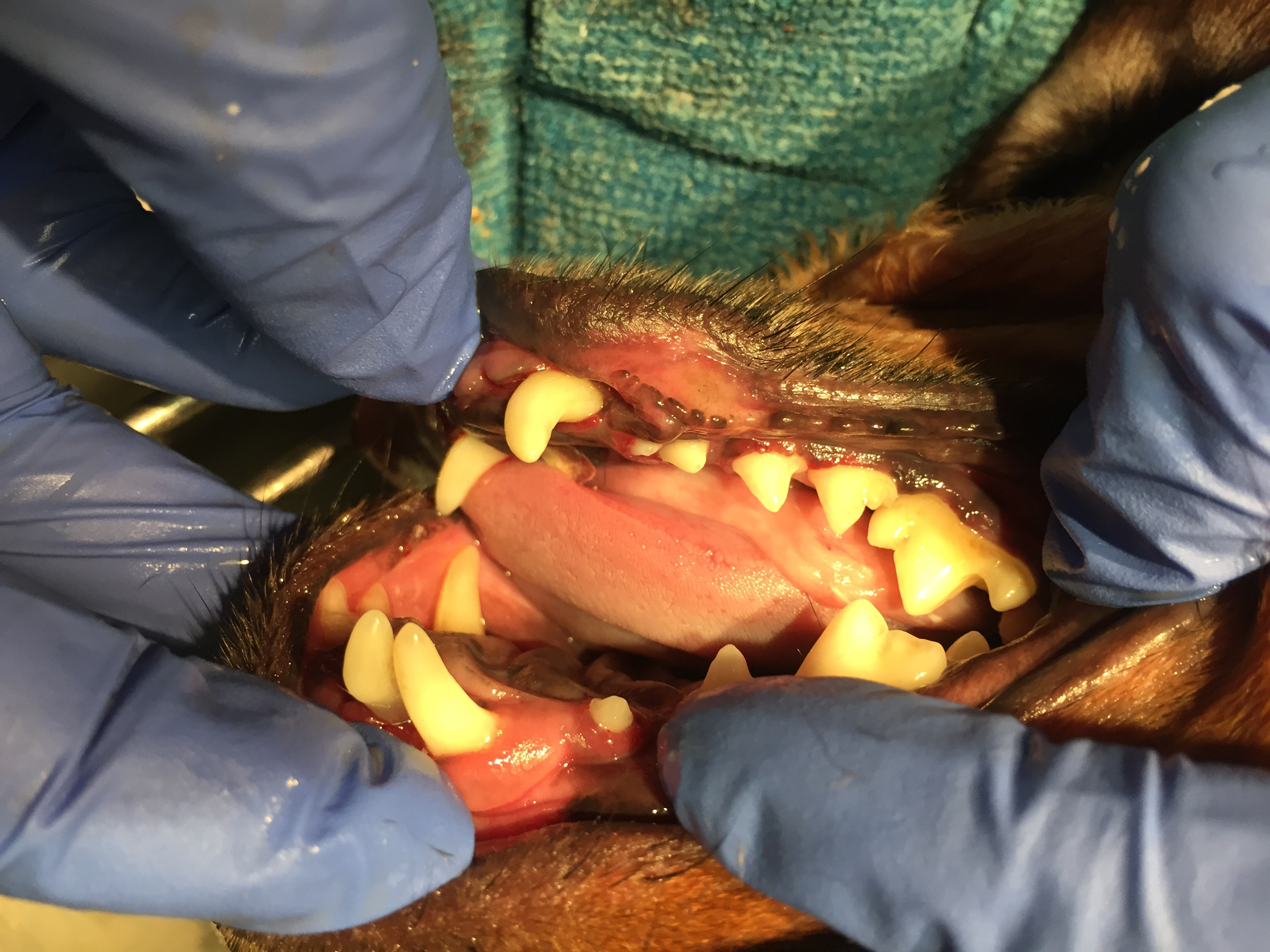Dental problem in pets, both cats and dogs, is quite common than you think. By the age of 3, 70% of cats and 80% of dogs have some form of gum disease. The dental problem isn’t only persistent in senior pets.
Here are some of the common risks from dental problem.
- If your pet remains uncured from dental disease, they are at a higher risk of heart, kidney, and liver disease
- Bacteria under the gum can travel to different internal organs.
- Dental disease can result in bad breath, painful chewing, and tooth loss.
- Broken teeth is a major concern among pets. Chewing on hard surfaces or materials can render their teeth weak. A broken tooth can expose the nerve of the tooth which can be a painful experience for your pet.

What is Periodontal disease?
Periodontal is a dental disease common in pets. The disease starts when bacteria in the mouth combine with food particles to form plaque on the teeth. Within days, minerals in the saliva bond with the plaque to form tartar (a hard substance). When tartar and plaque begin to start their way under the gum line, they produce toxins which lead to bone and tissue damage.
Periodontal disease includes conditions such as Gingivitis, the inflammation of the gums, and Periodontitis, loss of bone and soft tissue in the mouth. Both these diseases can be very painful and may affect the overall health of your pet.
What is Dental Cleaning?
You can check at home if your pet has any dental issue. Try this at home with your pet.
- Do you see any redness or swelling of the gums? Do you see any brown plaque or tartar?
- Does its breath smell bad sometimes or foul consistently?
- Redness, swelling and bad breath are all signs of periodontal disease due to bacterial infection.
During a veterinary dental cleaning, unless unable due to a medical issue, veterinarians will put your pet under general anesthesia to protect both your pet and the veterinarian. The veterinarian will use dental tools to remove the plaque and tartar from the teeth. Then, the veterinarian will use a special polishing paste which smoothen any scratches in the enamel of the teeth. A fluoride treatment or barrier sealant will then be put on the teeth to help strengthen and desensitize the teeth, while also preventing more plaque from developing.
Preventive Measure
Some of the common ways to prevent dental disease in cats and dogs are;
Brush their teeth. You should brush your dog’s teeth at least 3x a week and to brush your cat’s teeth at least 2x a week.